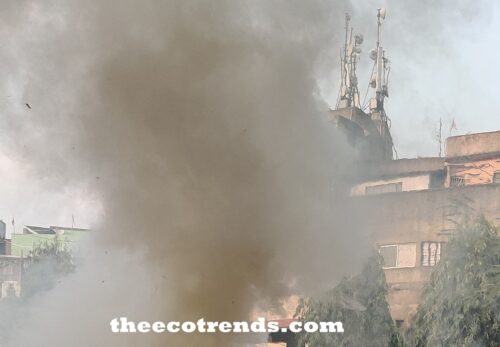Respiration is different in aquatic and terrestrial animals.
Aquatic animals have to breathe in water. They have to breathe faster than those animals living outside water. This is because the amount of the oxygen dissolved in water remains fairly low as compared to the amount of oxygen in the air, the aquatic animals have to breathe faster.
How do fishes breathe? They take in water through their mouths and force it past the gills where the dissolved oxygen is taken up by blood.
The terrestrial animals use different organs to take in oxygen of air and utilize in their bodies. Their respiratory organs have specific structures that increase the surface area which remains in contact with the oxygen rich atmosphere.
Human Respiratory System
Respiration in human beings takes place through a complex system of organs called as respiratory system. It comprises Nasal Chamber, Nasopharynx, Larynx, Trachea, and Bronchus etc. A diaphragm helps in contraction and relaxation of lungs during breathing.
1. Nasal Chamber: Nose is the initial and first part of the human respiratory system. It has two nostrils that are passages for air going to and coming from lungs. Both the nostrils ultimately join together in the back portion called as Nasal Chamber.
The internal wall of the nostrils contains hair and mucus cells. Hair filters the air coming from outside and mucus helps in sticking the dust particles and bacteria that may be coming from the external environment.
2. Nasopharynx: The curved area ahead of the Nasal Chamber is called as Nasopharynx. It opens in respiratory tube through a hole which is called as glottis. It is covered by a cartilaginous valve which is called as epiglottis. It prevents any food particle against going into the respiratory tube.
3. Larynx: The air passage becomes straight after Nasopharynx. The whole length from Nasopharynx to the trachea is called as larynx. It is made of cartilage.
4. Trachea: After larynx there is a long, broad tube made of cartilage. It is called as trachea. In human males the cartilage of trachea remains elevated. In the central region of trachea there remain two vocal chords that vibrate to produce sound. The portion ahead of trachea is called as the respiratory tube.
Walls of the respiratory tube are made of cartilage arranged in rings. This is the reason why the respiratory tube does not collapse even when there is no air in it. The respiratory tube forms a bronchus which later divides into two parts .
5. Bronchus: The part of the respiratory tube ahead of trachea is called as bronchus. It divides to form two bronchi each joining a lung. Here bronchi form a shape of inverted y.
6. Lungs: Each one of the two bronchi is attached to a lung which is a sac like structure made of double membranes. These membranes are called as pulmonary membranes.
When a bronchus enters into a lung, it divides into many branchlets each one called as bronchiole. Bronchioles open in sacs lined with thin membranes. These sacs are called as alveoli.
Each alveolus has a network of fine capillaries inside it. These capillaries remain filled with blood brought by pulmonary vein.
There are about 300million alveoli found in bunches in the two lungs. It is due to alveoli that the actual internal surface area of each lung is increased many times. The total area of all the alveoli has been estimated to about 80 sq metres which is even more than the total area of our body.
7. Diaphragm: It is an elastic but strong structure which separates thorax from abdomen. It can increase or decrease the volume of the thorax cavity. This leads to working of lungs i.e. contraction and deflation.
aquatic, terrestrial, animals, plants




